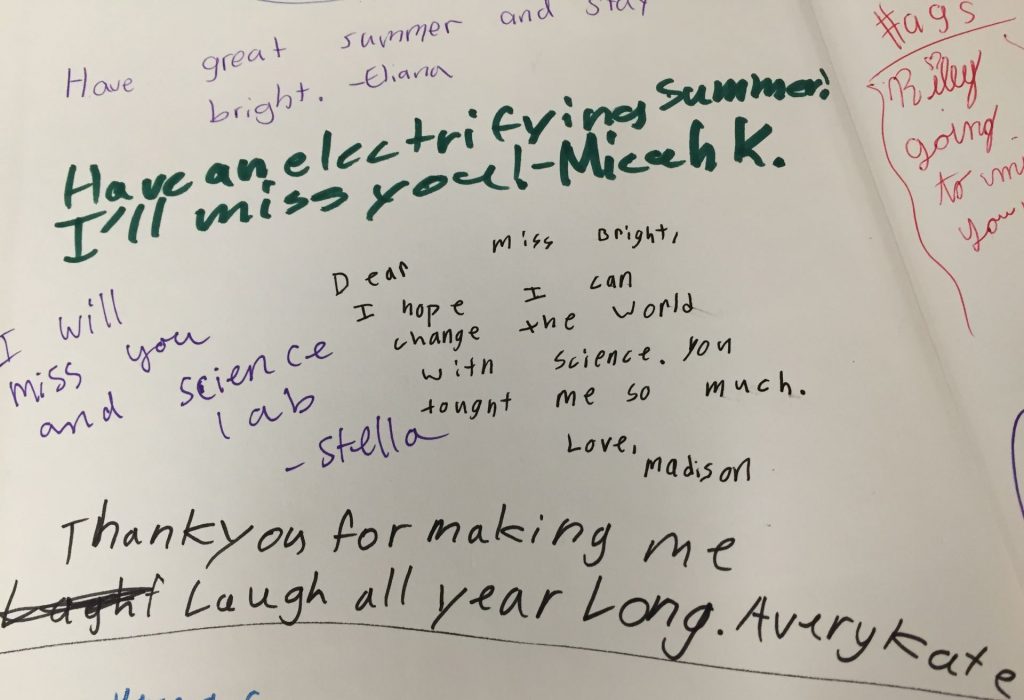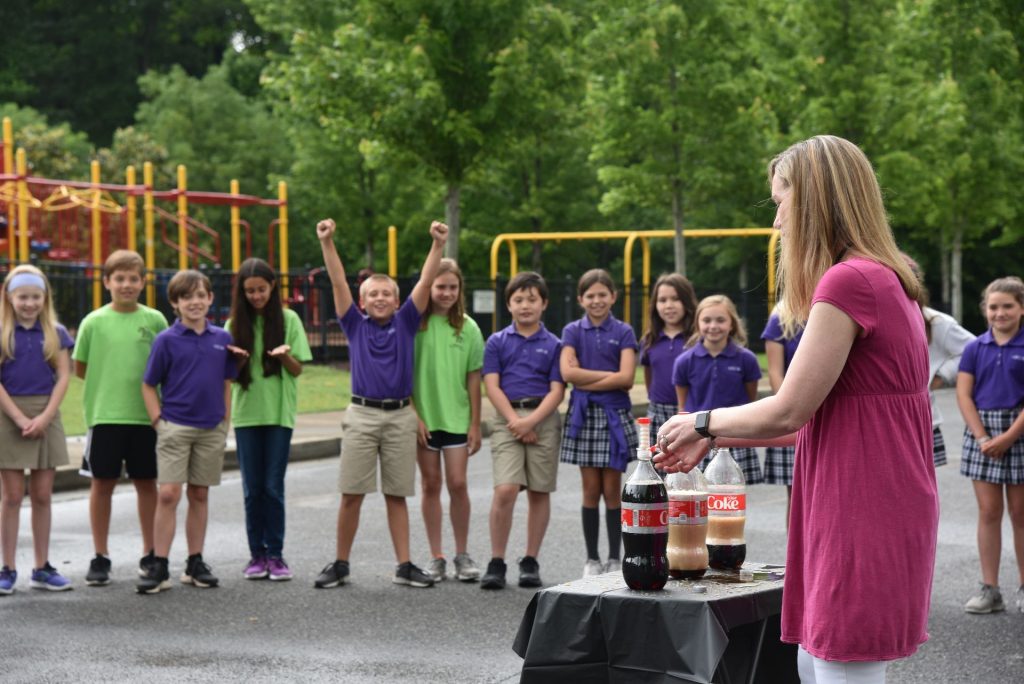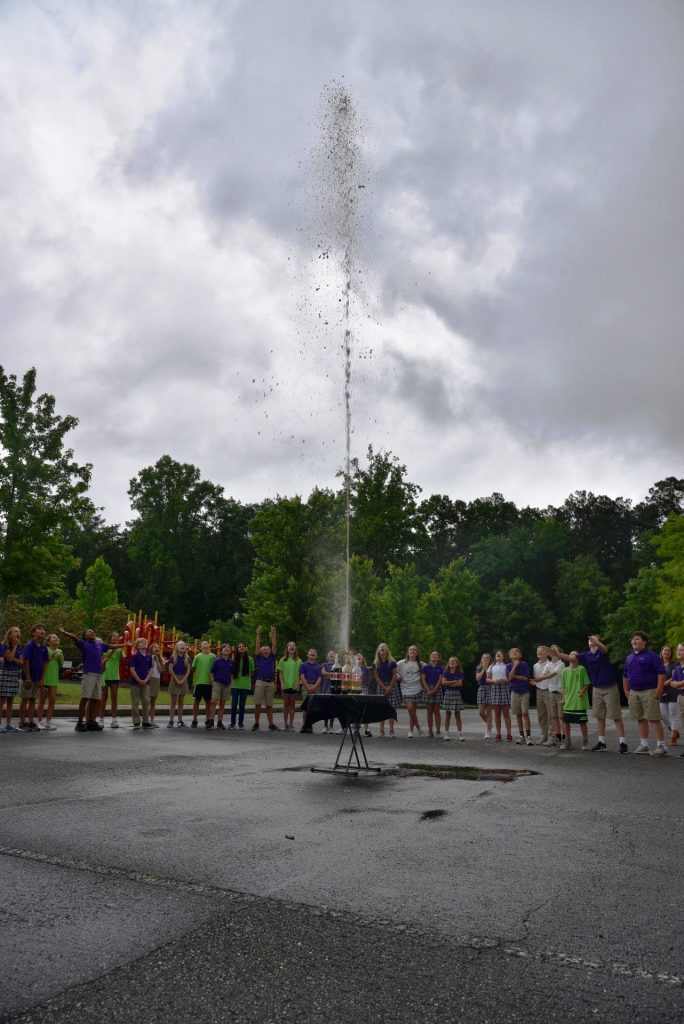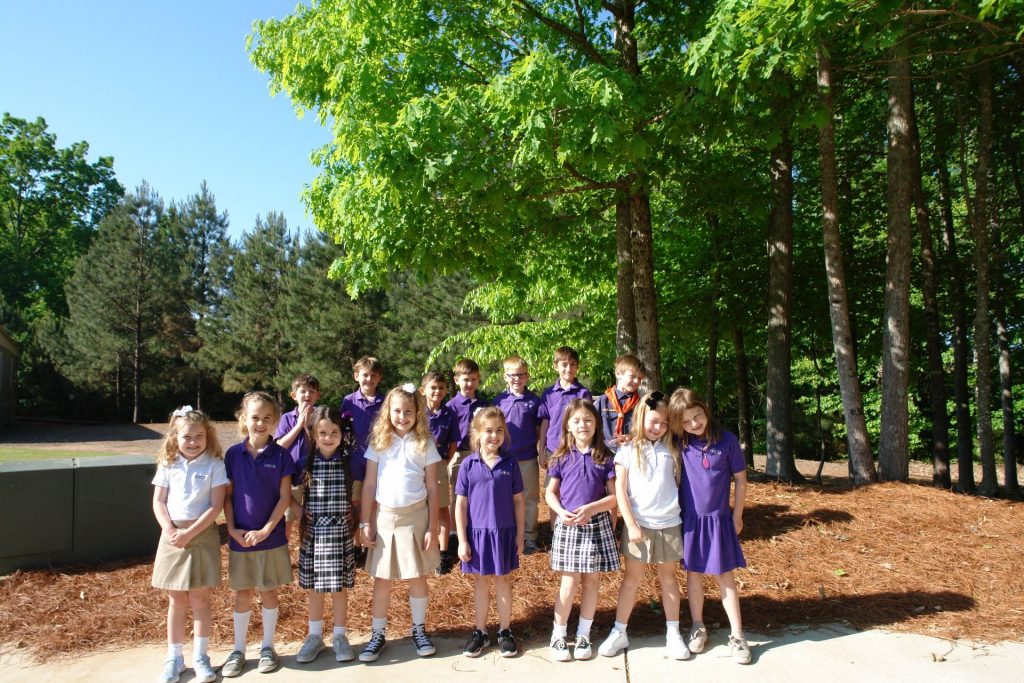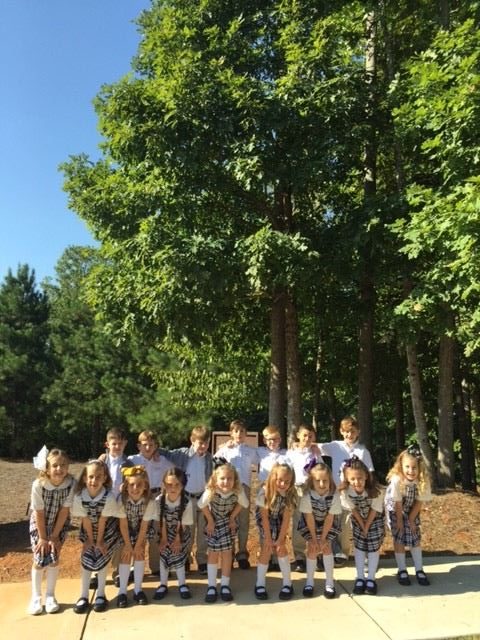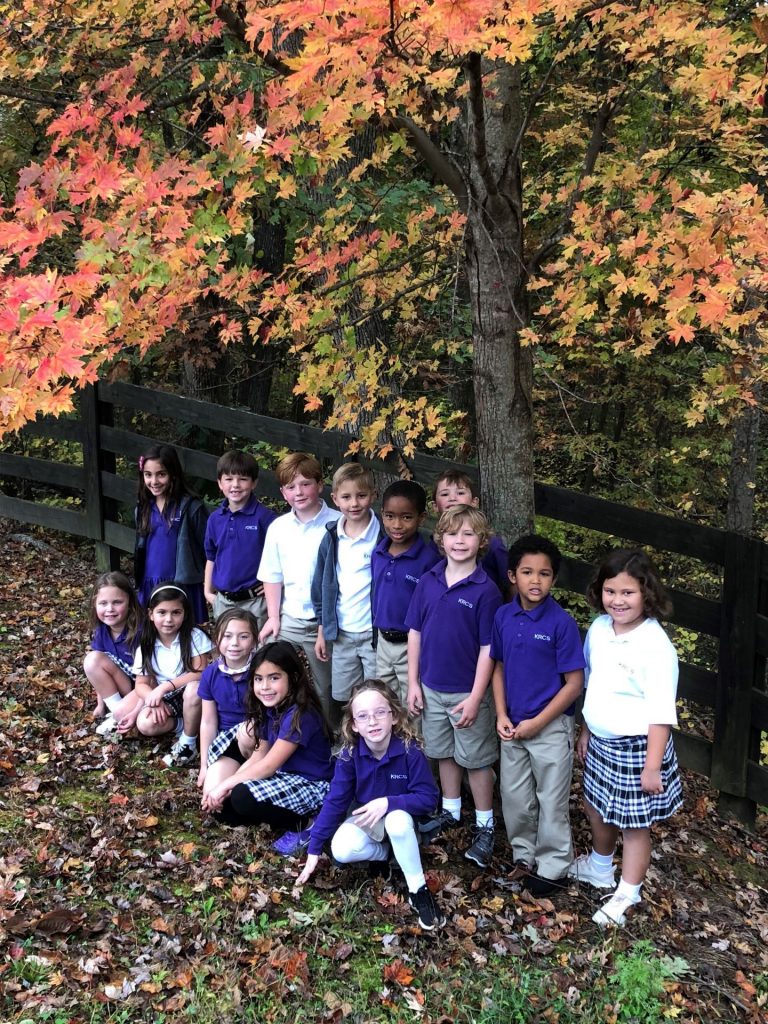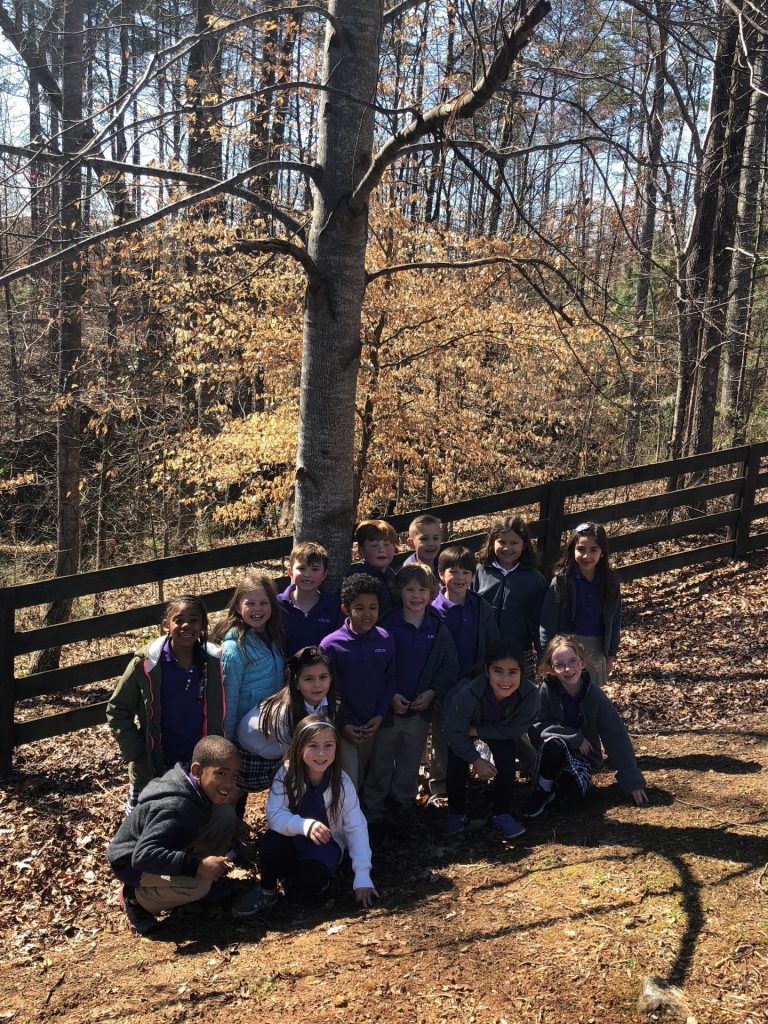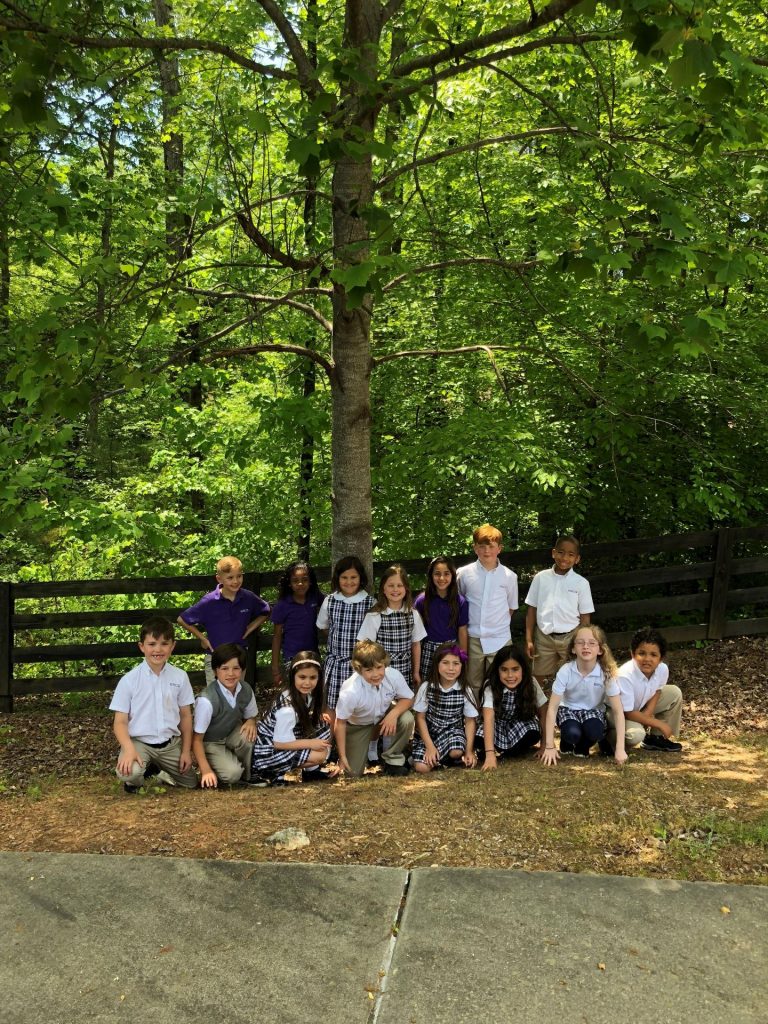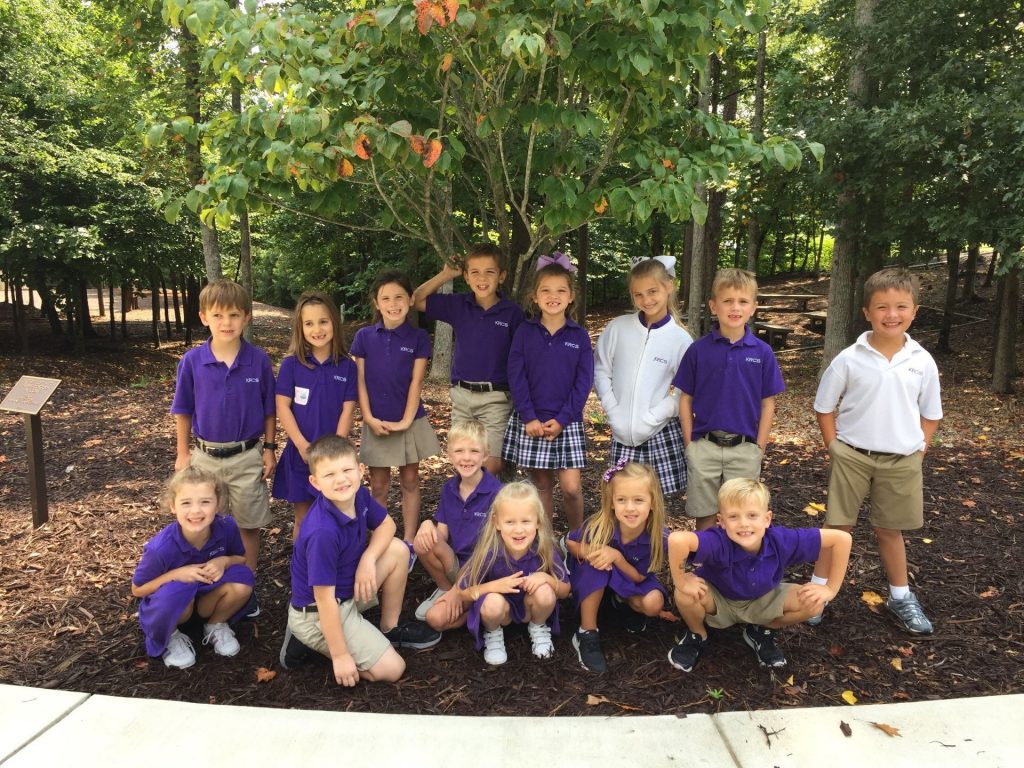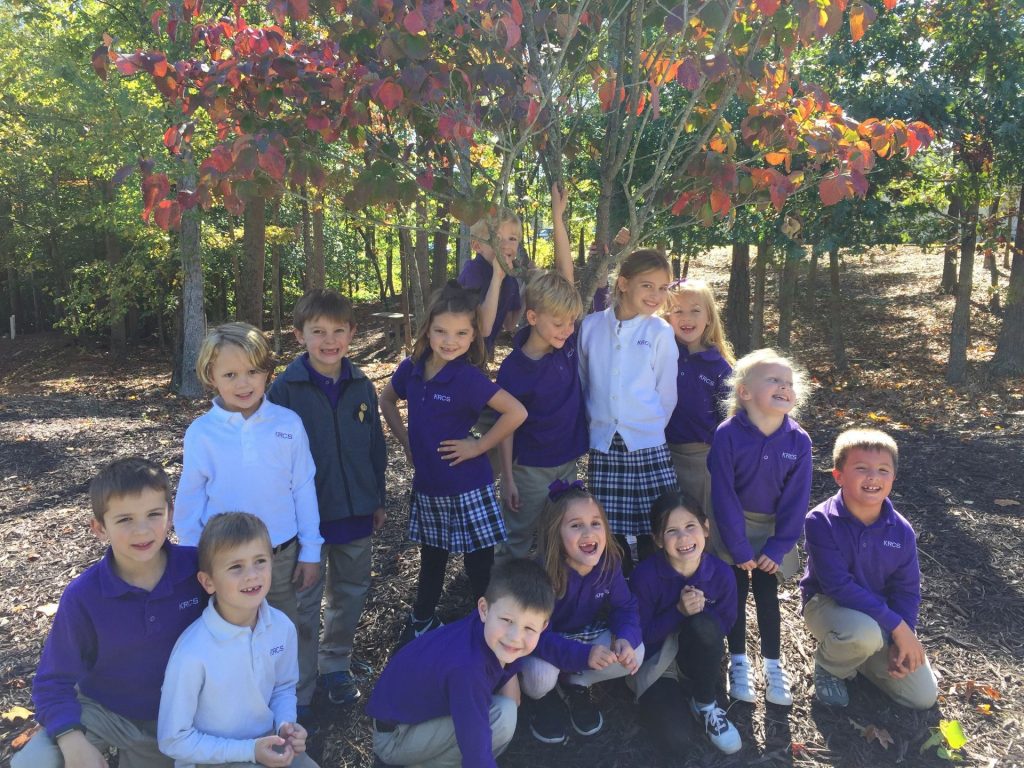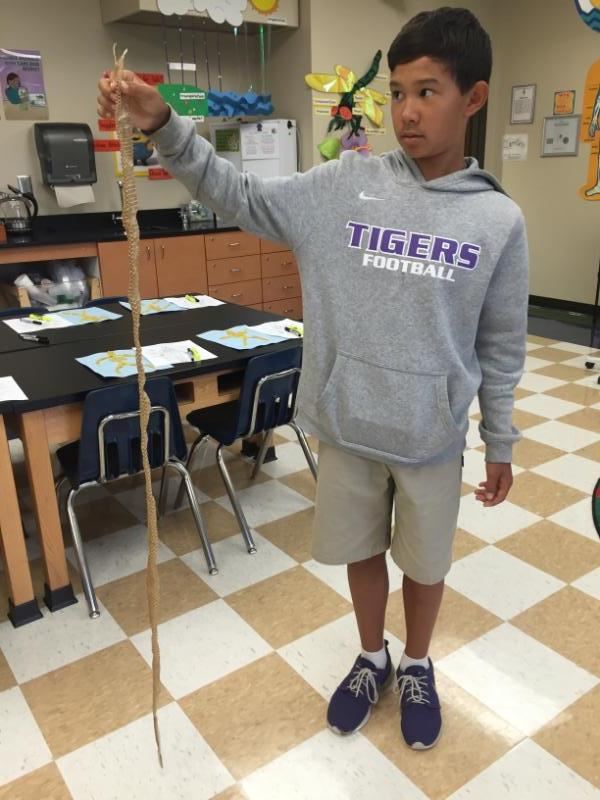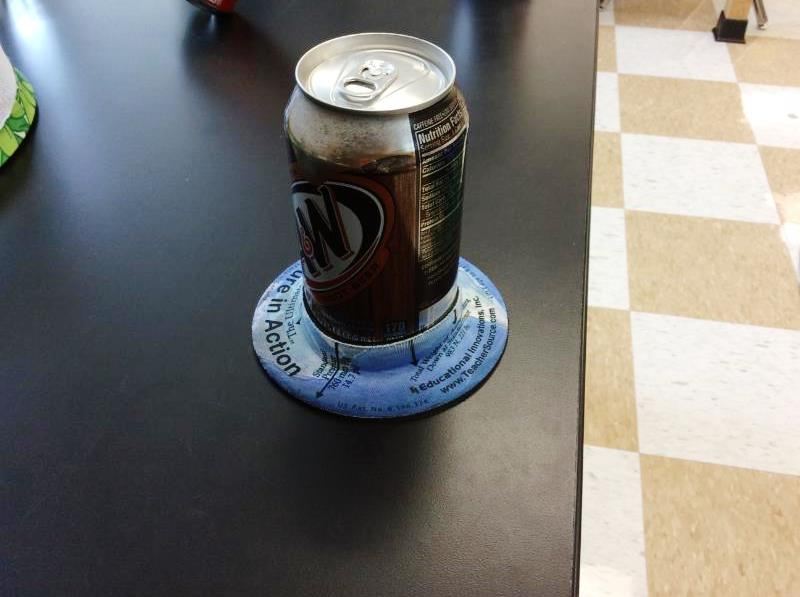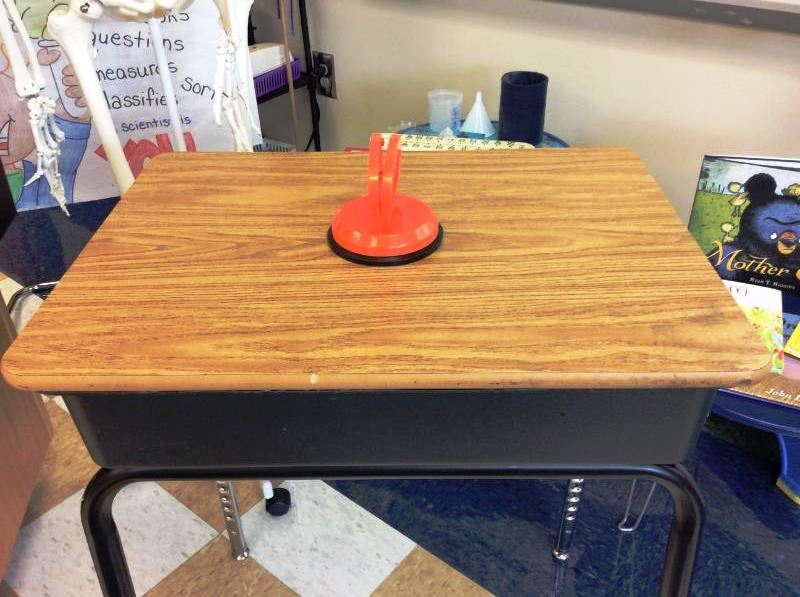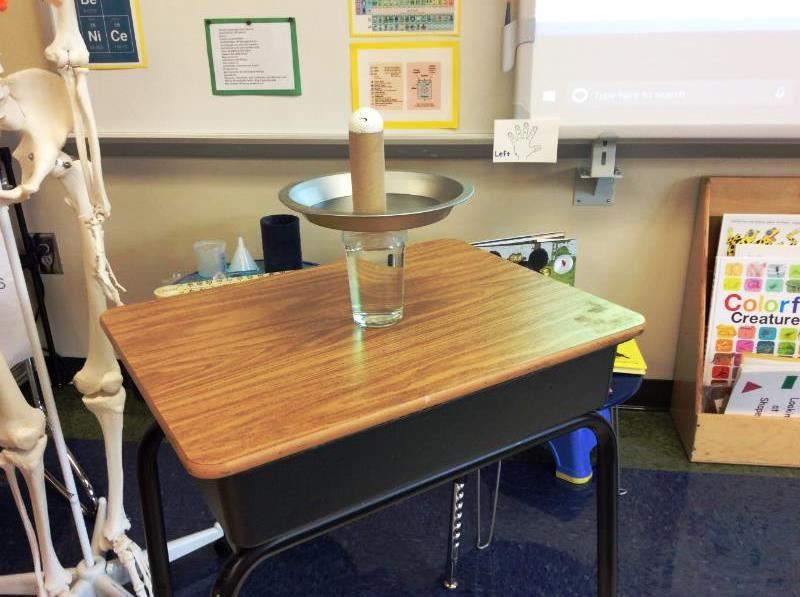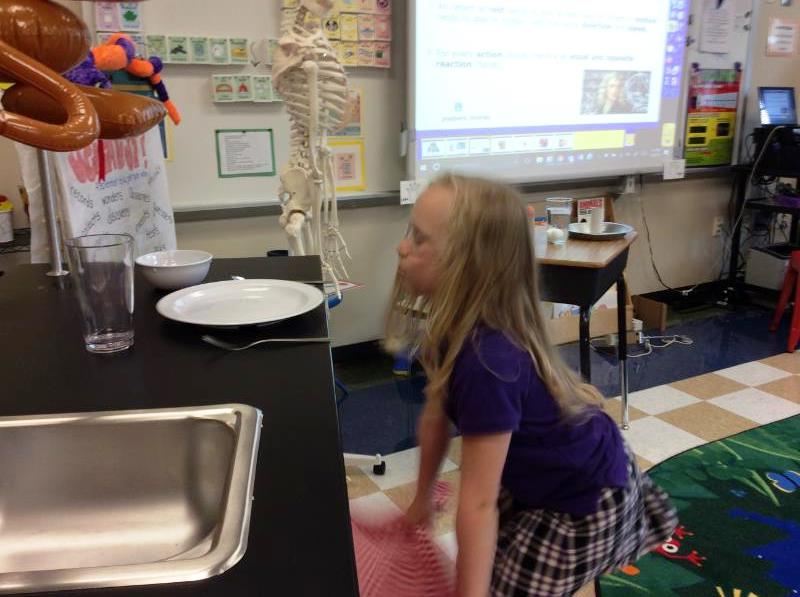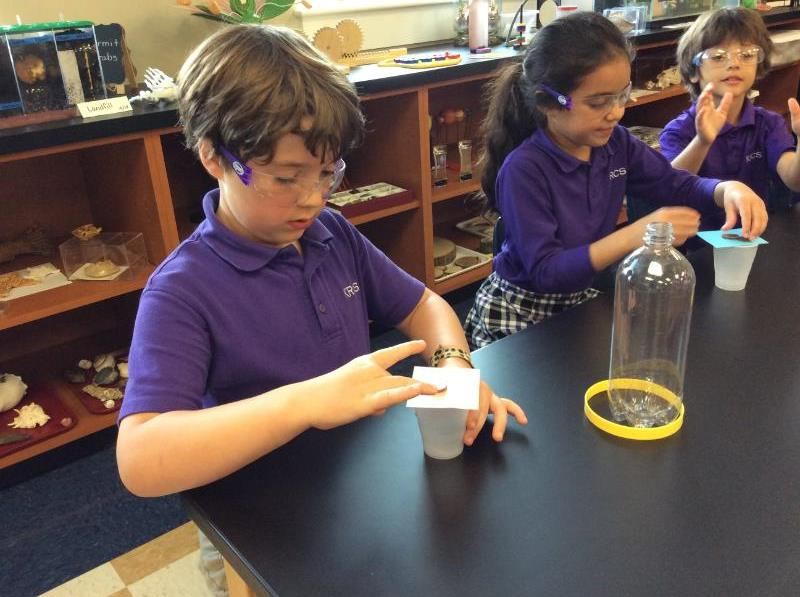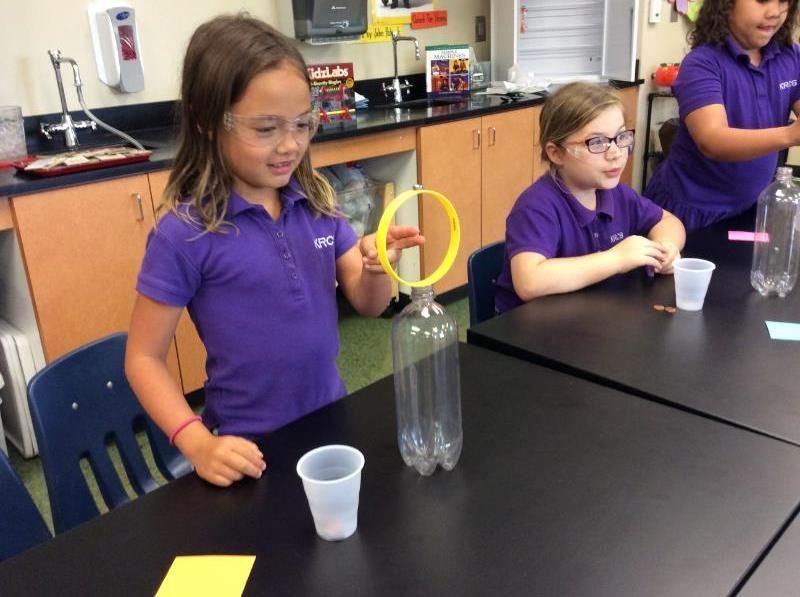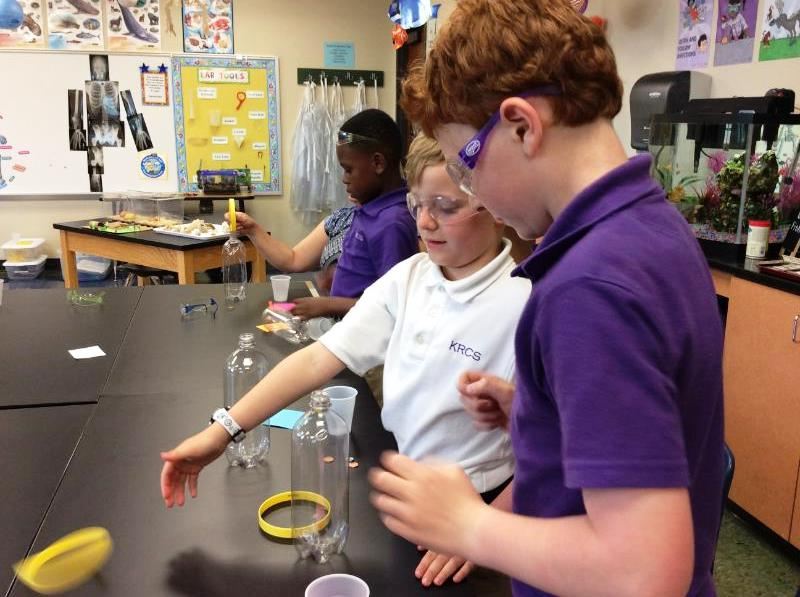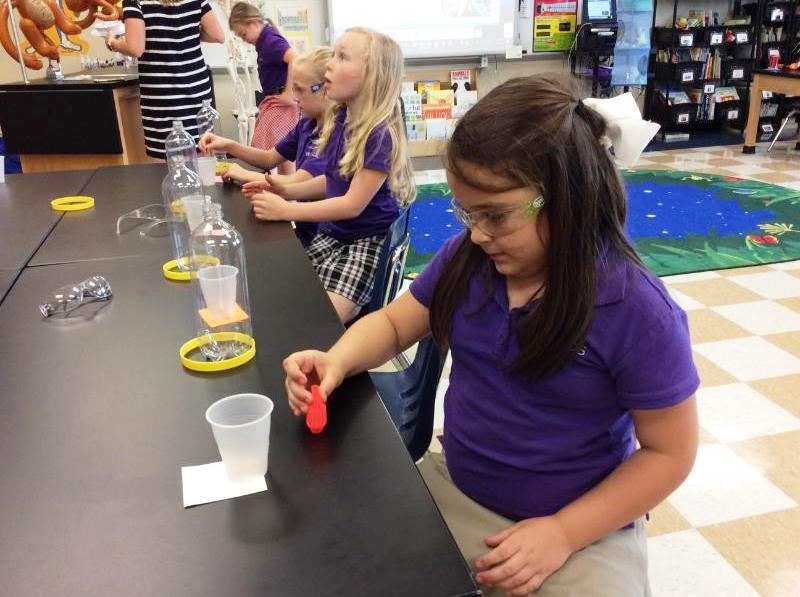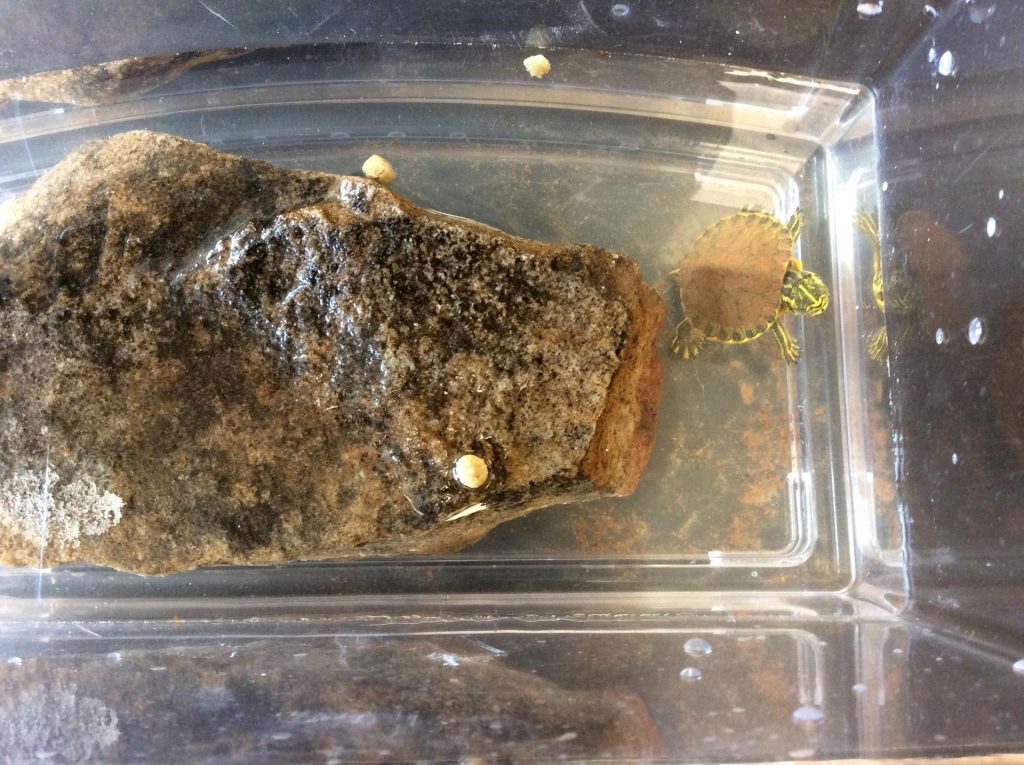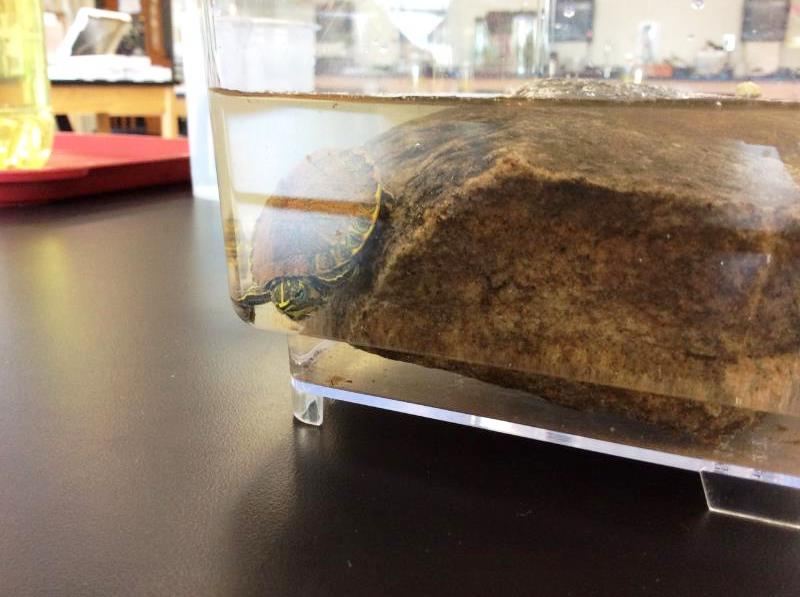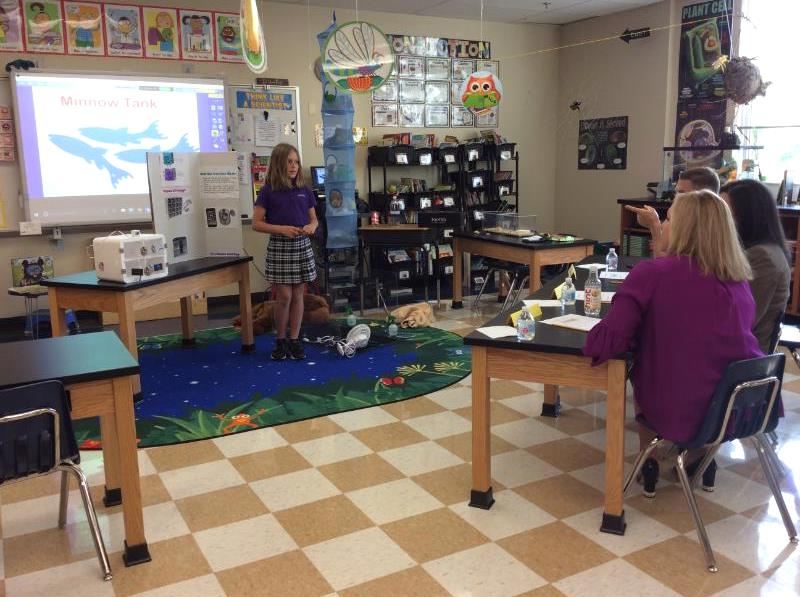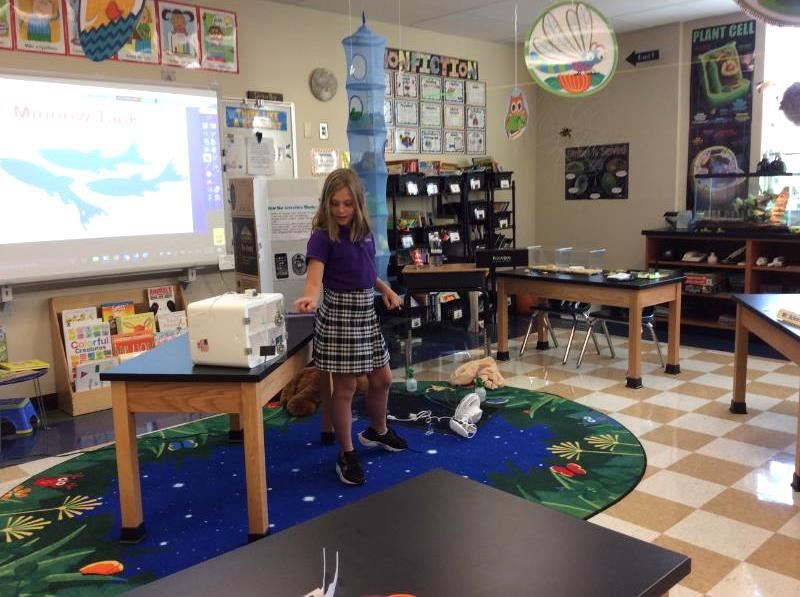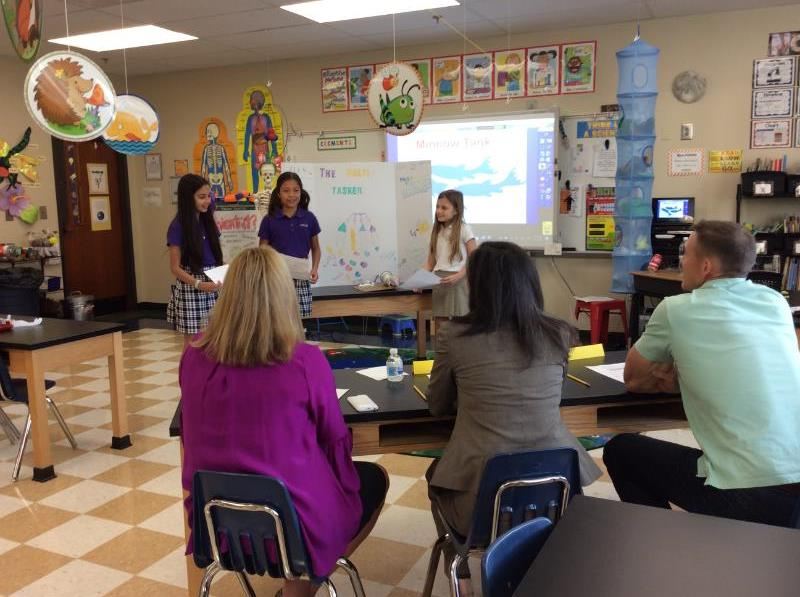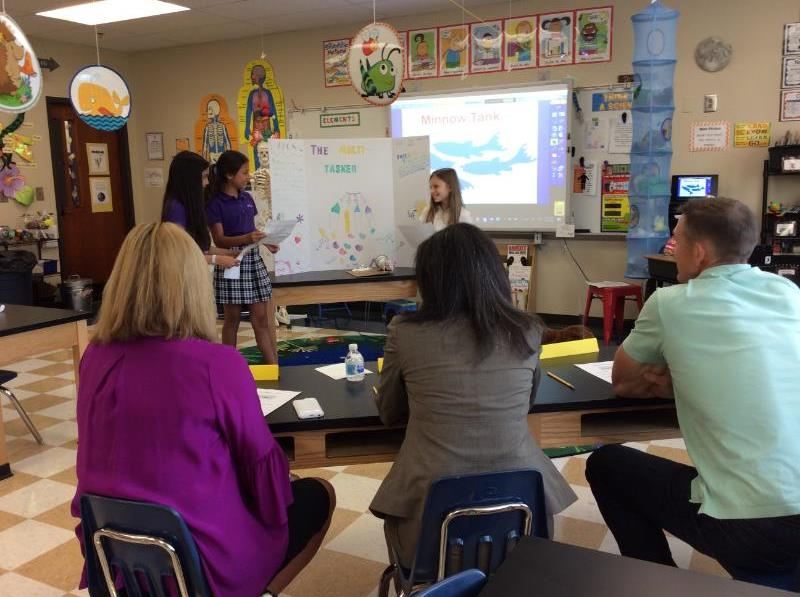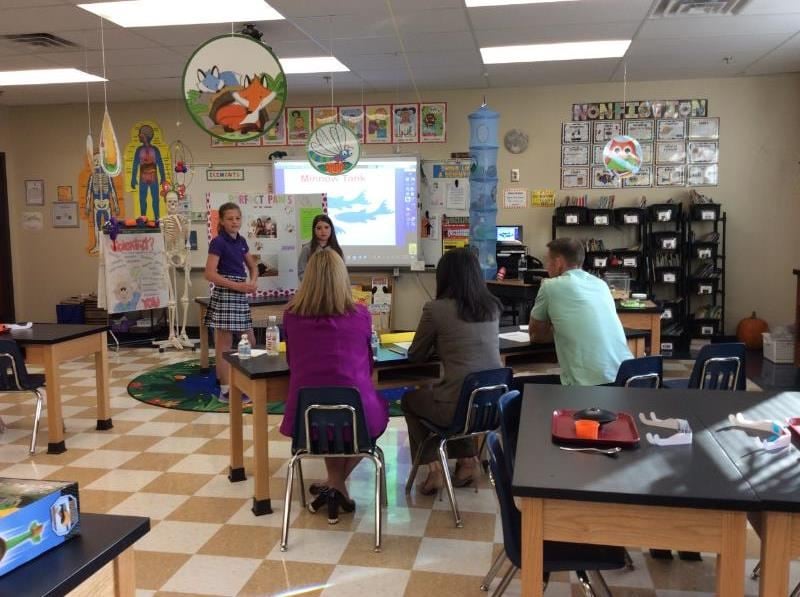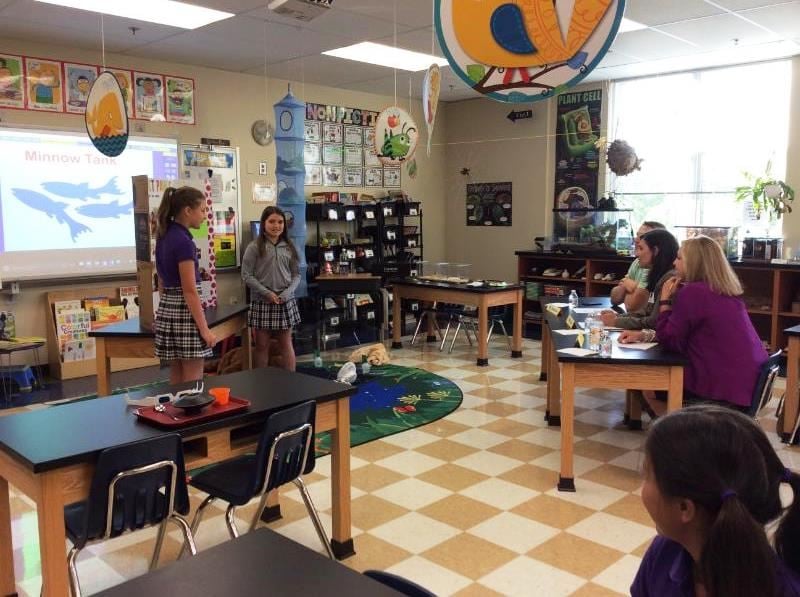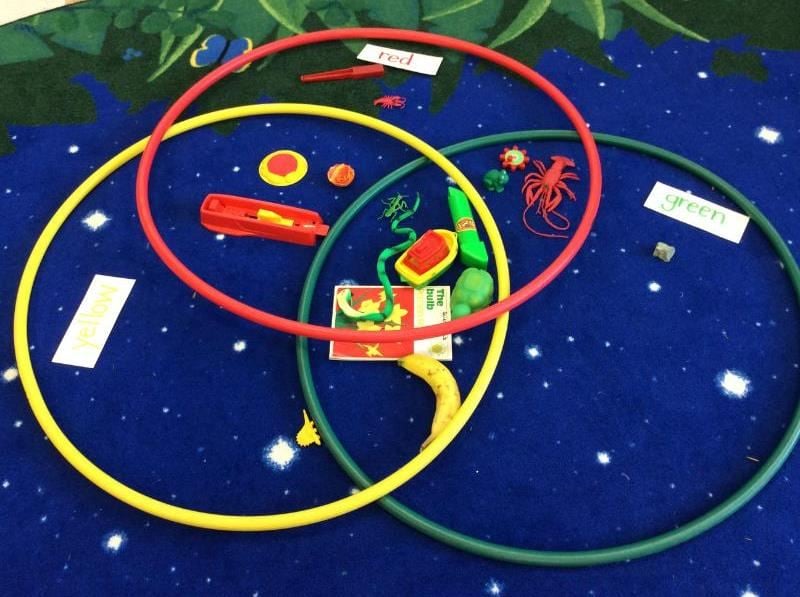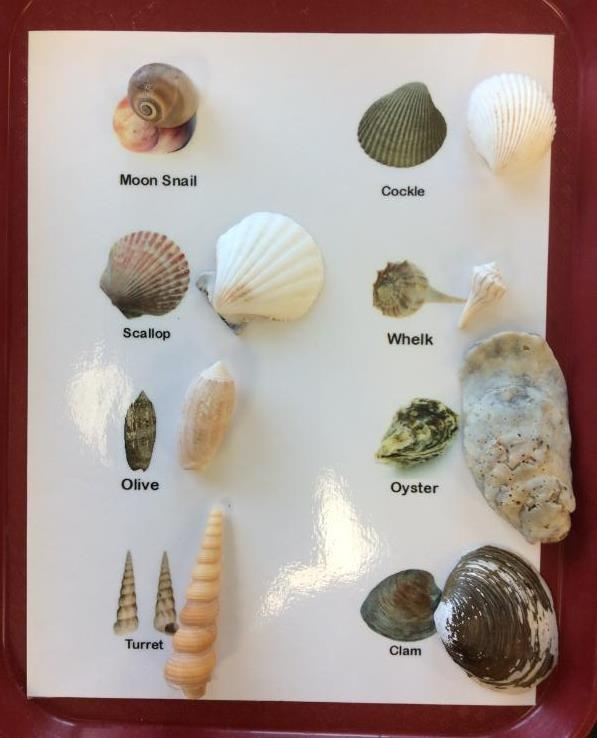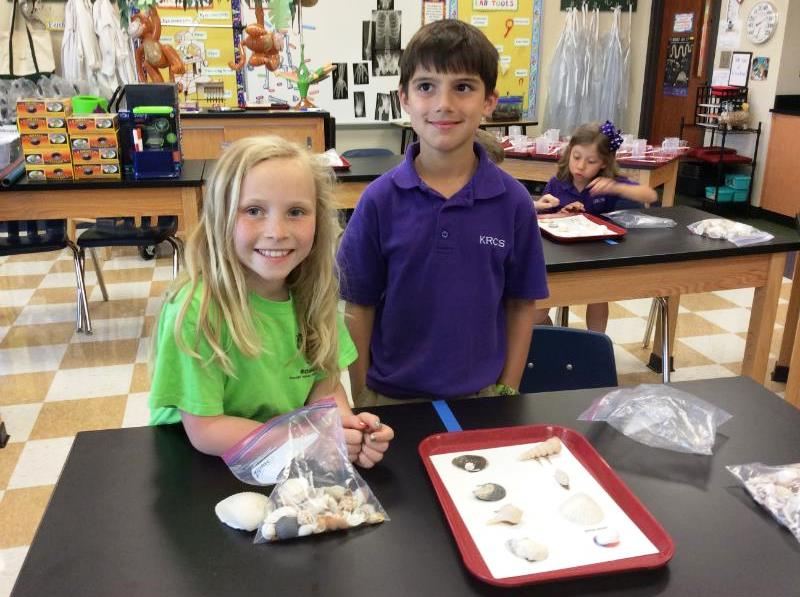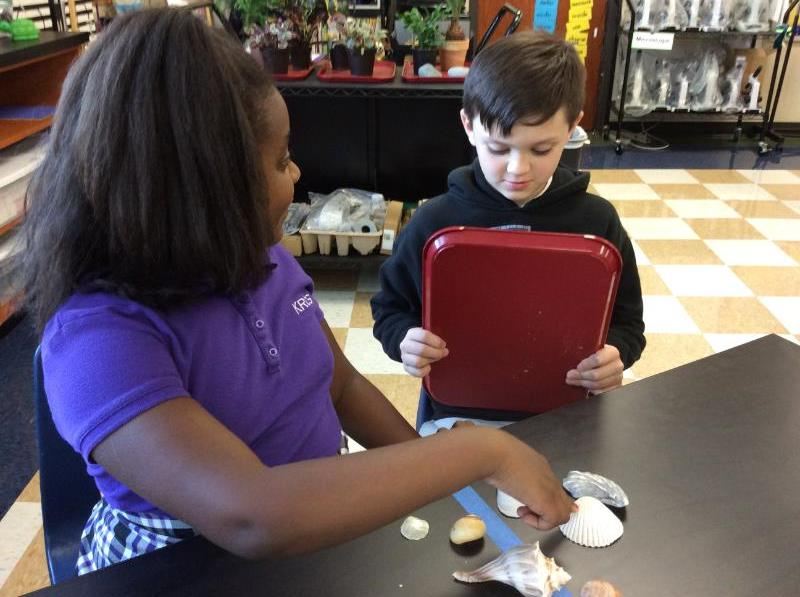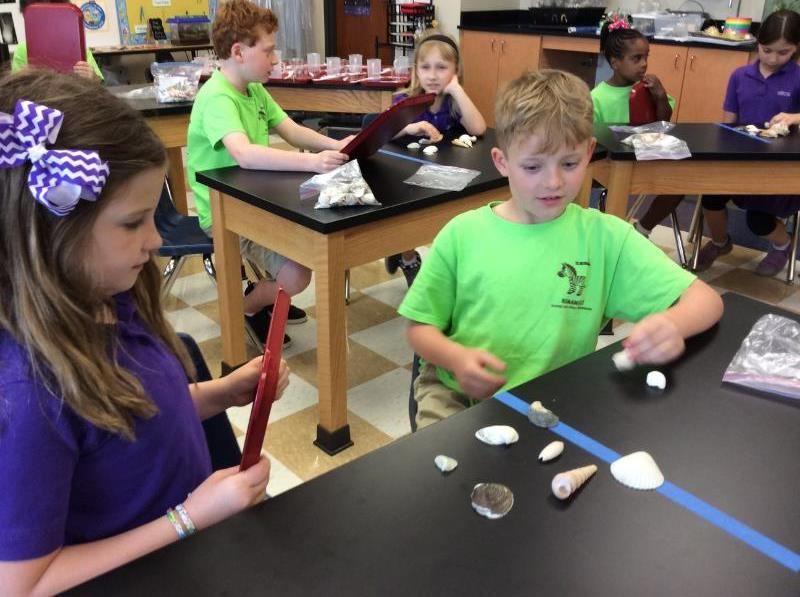Frogs
Last Lab
I always end my fourth grade labs with the popular Diet Coke and Mentos experiment. The results are explosive! We used five, then six and finally seven Mentos. You could change up this investigation by using warm and cold sodas, different types or brands of soda, or sodas with the tops left off for varying amounts of time.
What would happen to your stomach if you washed down a Mentos with a glass of coke?
I sure will miss these scientists next year when they move to middle school! I hope they visit me often.
Adopted Tree
Snakeskin
Force and Motion
Second grade scientists began this lab with a lesson about air pressure. We tried to pick up the can, but it was almost impossible, but the air pressure paddles made it very easy to pick up the desk. The power of air pressure (almost 15 pounds per inch) is amazing!
Then we investigated Isaac Newton’s first and third laws of motion.
- An object at rest remains at rest, or if in motion, remains in motion unless acted upon by an external force.
- For every action, there is an equal and opposite reaction.
What will happen to the ball if I knock the side of the pie plate? Why?
How is it possible to pull the tablecloth off the table without the dishes falling on the floor?
We moved to the lab tables and applied our knowledge of the laws of motion to knock the pennies in the cup and the hex nut inside the bottle without touching either.
Finally, we reviewed potential and kinetic energy with boinks and dropper poppers. I introduced the idea that there are different kinds of potential energy: elastic, gravitational, and chemical.
Turtle Baby
Invention Convention and Minnow Tank
A few weeks ago, we held our third annual Fourth Grade Invention Convention. Students shared their inventions with their classmates and teachers. Today, the students participated in the Minnow Tank, our version of the TV show Shark Tank. Three community business leaders volunteered their time to provide feedback and encouragement to the participants. The inventors received ideas for improving their products, as well as suggestions for marketing and pricing.
What an opportunity for these students! As the entrepreneurs worked through the Design Process to solve a real problem, they developed twenty-first century skills, such as perseverance, creativity, critical thinking, and problem solving. This was an optional activity and I am proud of these girls for going beyond expectations. Inventors received a medal for participating. Next year, we will open this project to third and fourth graders. Maybe one of them will change our world!
Classifying
Scientists classify everything! At the beginning of lab, my kindergarten scientists sorted their classmates into groups using a single attribute (gender, color of eyes, etc.) Then we learned to use a Venn diagram to classify physical properties of objects with multiple attributes. The objects that have a property in common are placed in the intersection (where the circles overlap). We practiced math concepts, such as equal/unequal and more/less with this activity too.
Shells
Second grade scientists concluded their study of invertebrates with a lab focused on shells. We learned that shells are the exoskeletons of soft-bodied marine animals. They are classified into two main groups: gastropods and bivalves. Gastropods have a single shell which spirals outward and to one side as it grows. Bivalves have two shells that are hinged together. We looked at examples of each and my biologists learned to identify some common shells as they matched them to pictures. Afterwards, we quizzed each other.
What do you hear in a shell? Click here to find out.
